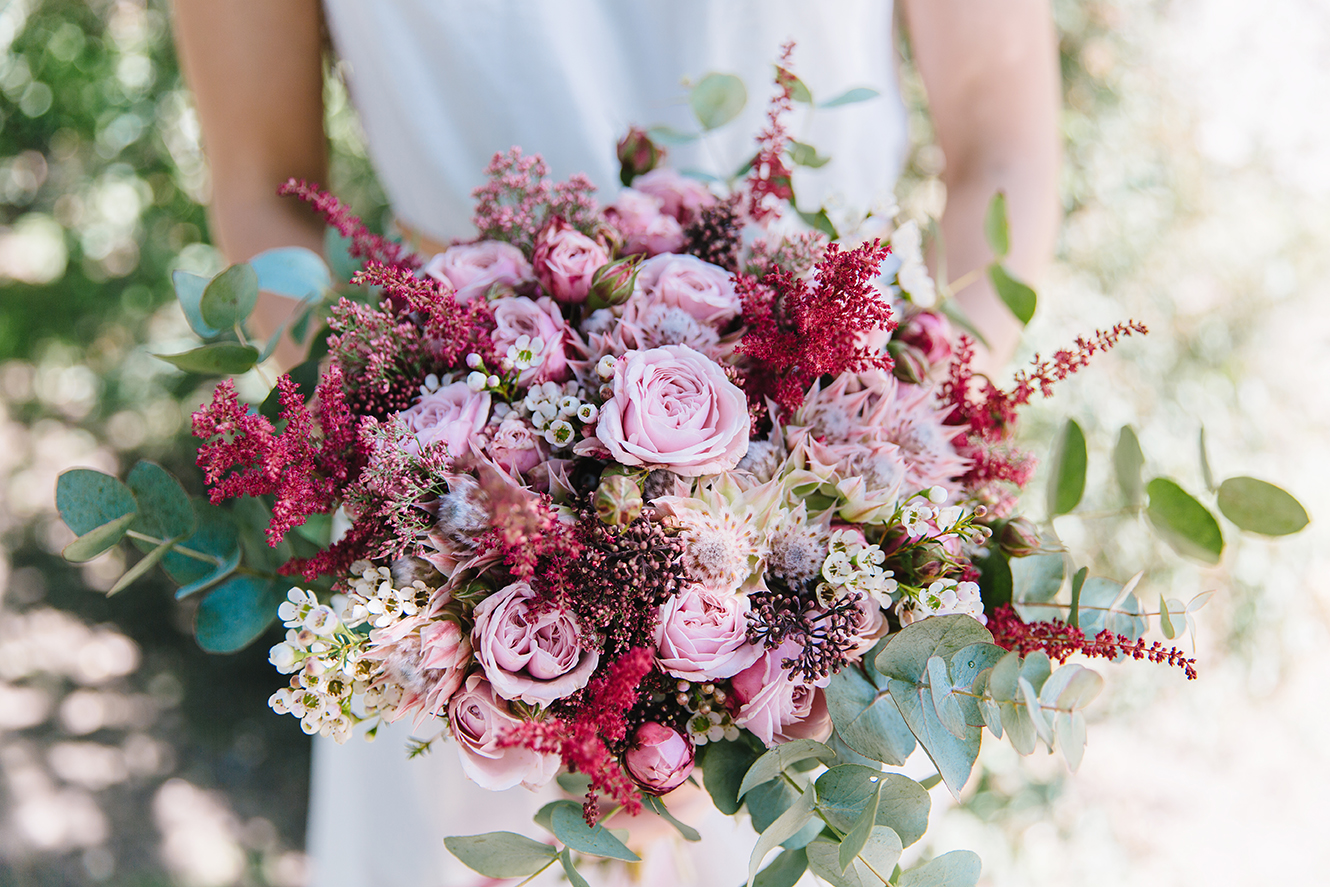The Flower Language Dictionary: Floriography for Your Wedding Bouquets
So many decisions go into planning your wedding: The date, the menu, the bridal gown and bridesmaids dresses, and so much more. One of the arguably most important details is the flowers, specifically the bridal bouquet.
Flower language has been used across many cultures throughout history to signify special meaning based on the types of flowers and even the colors used. Some of these old traditions remain relevant to this day; there’s a reason that red roses are associated with love, after all. By taking inspiration from the various flower language dictionaries, your bouquet can tell the story of your unique love with your partner as you celebrate together.
Use this guide to help you plan the perfect wedding bouquet or any other flower arrangement you may need for your special day.
Victorian Flower Language Meanings
Flower language gained popularity in the Victorian Era. At that time, people took communication through flora very seriously and many homes had books of flower dictionaries to help decipher special meanings and messages from the flowers they gave and received. While no longer commonly practiced in the modern day, floriography is still a beautiful way of expressing yourself, though few people may remember the specific meanings off the top of their head.
Different variations of flowers have different meanings in the Victorian flower language. For example, red roses represent love while dark red roses are for mourning. Pink roses represent happiness, white roses are innocence, and yellow roses symbolize infidelity, which you probably don’t want in your hand bouquet wedding!
Carnations come in a similar variety of colors and meanings; red for deep love, white for innocence, pink for “I’ll never forget you,” and yellow for disappointment. The green carnation, thanks to Oscar Wilde’s influence, even became associated with homosexuality.
Hanakotoba Meanings
Hanakotoba is much like the floriography of the Victorian era though it originates from Japan and therefore assigns different meanings to different flowers. That said, there is some overlap and common flowers and meanings between both languages. In hanakotoba, carnations are mainly associated with familial love while roses and their colors have very similar meanings to Victorian flower language.
Peonies, for example, are different in both languages. In hanakotoba they are associated with bravery while in Victorian flower language they’re associated with happiness or even shame.
Suggestions For Your Bridal Bouquet
Choosing flowers that translate to different variations of love is one of the best ways to celebrate your wedding. Many of the flowers in both languages are related to love.
Yellow tulips are meant to say “there is sunshine in your smile” and represent a declaration of love. Asters, a beautiful bright purple flower, are a symbol of love and daintiness. Baby’s Breath has long been a wedding classic and for good reason; it symbolizes innocent, everlasting love. Daisies also represent innocence and love, while the hibiscus represents delicate beauty. Both would make a wonderful addition to any bouquet.
For a more unique approach to your bouquet, you may want to consider including sunflowers. In hanakotoba, they represent passionate love, hope, and radiance. Even without knowing their deeper meaning, just looking at the bright yellow flowers makes the room feel a little happier.
Suggestions For Wedding Corsages
Most weddings tend to match the corsages to the bridal bouquet though there’s no hard and fast rule about this. If you want a unique meaning separate from the bridal bouquet, consider coordinating different flowers in your corsages. Stephanotis flowers are small white blooms that represent marital happiness. Eucalyptus, another commonly used plant in weddings, is associated with protection and safety. Camelias of every color are relevant to expressing love at your wedding; pink signifies longing, red the flame of love, and white is the equivalent of calling someone adorable.
Suggestions For Other Wedding Flowers
Beyond the bouquets and corsages, you may need flowers to decorate your wedding venue or for other purposes in your wedding. We suggest incorporating ivy, a symbol of fidelity and marriage itself. Wisteria is another great plant to use to welcome your guests given that’s exactly what it means: welcome.
With so many options available, this list gives you a good place to start when planning the flowers at your wedding. If you have a special connection to a certain plant or flower, incorporating that into your special day is the perfect way to celebrate regardless of the Victorian or hanakotoba meaning. Personal meaning is what matters the most; go with what resonates most with you and your flowers—and wedding—are sure to be a hit.

